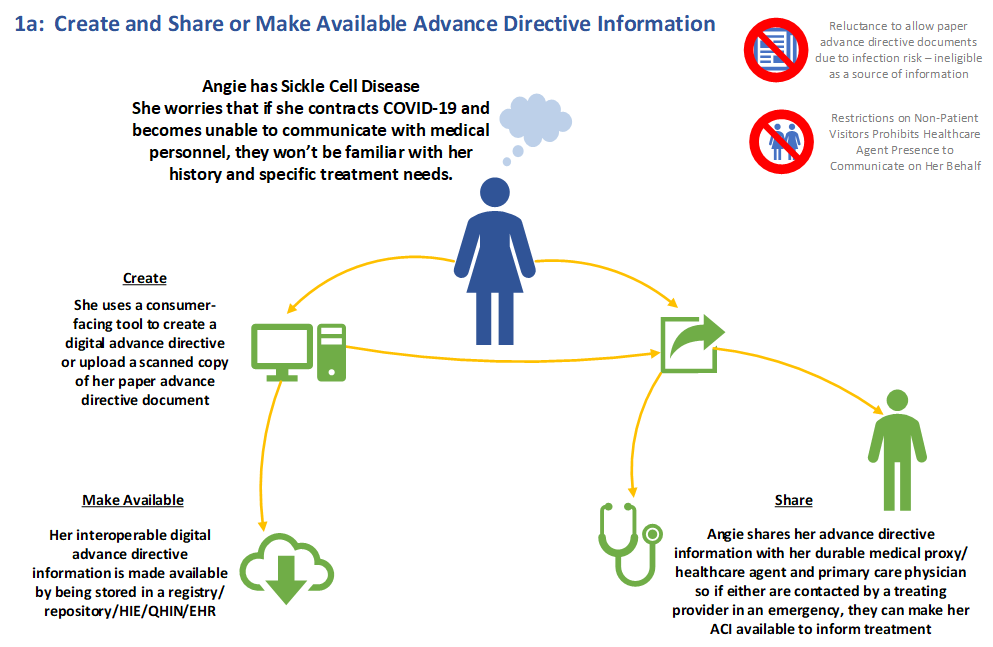This page is part of the PACIO Advance Directive Information Implementation Guide (v1.0.0: STU 1) based on FHIR (HL7® FHIR® Standard) R4. This is the current published version in its permanent home (it will always be available at this URL). For a full list of available versions, see the Directory of published versions
Angie has Sickle Cell Disease. She worries that if she contracts COVID-19 and becomes unable to communicate with medical personnel, they won’t be familiar with her history and specific treatment needs.
She uses a consumer facing tool to create a digital advance directive or upload a scanned copy of her paper advance directive document. This tool may any customer-facing application, including but not limited to an EHR or a specialized care application. Her interoperable digital advance directive information is made available by being stored in a registry/repository/HIE/QHIN/EHR.
Angie shares her advance directive information with her medical proxy/healthcare agent and primary care physician so if either are contacted by a treating provider in an emergency, they can make her advance directive accessible to inform treatment.
NOTE: This IG makes no comment as to how EHRs should be architected, as this is beyond the scope of a FHIR implementation guide.
